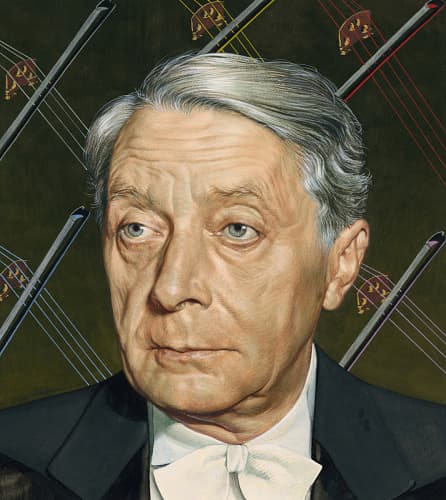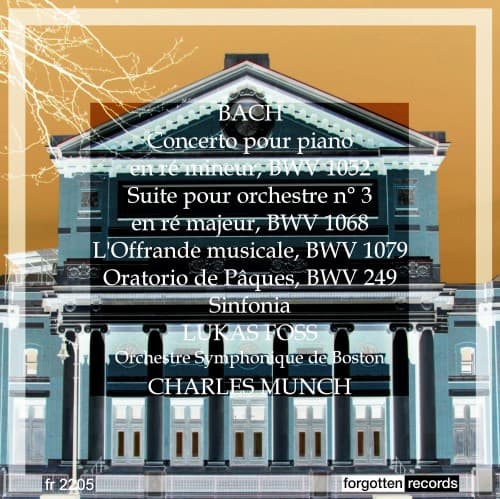Bach used the material in his Easter Oratorio several times. Its original appearance was as an oratorio for Easter 1725. It was composed in Leipzig and first performed on 1 April 1725 under the title Kommt, eilet und laufet (Come, hasten and run). 13 years later, it received its Easter Oratorio title in a revision done in 1738. Sometime between 1743 and 1746, Bach revised it again, changing the third movement from a duet to a four-part chorus and changing some of the text in the fifth movement. In 1749, a third trumpet part was added.

Elias Gottlob Haussmann: J.S. Bach, 1746
The work as a whole is based on an earlier cantata that is now lost, which was known as the Shepherd Cantata. We know this work only from its libretto, written by Picander (Christian Friedrich Henrici, 1700–1764), who is probably the author of the Easter Cantata text as well. Picander and Bach started working together in 1725; Bach used his poetry in the St Matthew Passion and many other works. As Bach reused music, Picander provided him with new texts, reversing the process of setting words to music by writing words for the music.
The oratorio is set for just 4 characters plus chorus: Mary the mother of James, Mary Magdalene, Peter, and John. Unlike in his other oratorios, there is no ‘evangelist’ to explain the events, this oratorio expects that you know the story, which is based on the resurrection story of the four Gospels, after Matthew 28, Mark 16, Luke 24 and John 20. This ‘visit to the grave’ oratorio, where the chorus opens with Kommt, eilet und laufet (Come, hasten and run) telling all that the Saviour has risen and all should be glad. In his 1738 revision, Bach discarded these role names and indicated simple parts for Soprano, Alto, Tenor, and Bass.
The opening sinfonia for the oratorio puts the trumpets and drums on display, with the violins filling in the sound and then bringing their own melodies forward with the woodwinds. The fanfare-like opening is appropriate for one of the joyous days of the Christian calendar: Easter.
This sinfonia is followed by an Adagio section for oboe (or flute in 1743) over sigh motifs in the strings. This slowdown prepares us for the oratorio proper.
J.S. Bach: Oratorio de Pâques, BWV 249: Sinfonia

Boris Chaliapin: Charles Munch, 1949 (Smithsonian Institution, National Portrait Gallery) (Time magazine cover, 19 December 1949)
This recording was broadcast in 1961 from Tanglewood, with Charles Munch conducting the Boston Symphony Orchestra. In an extensive career in Europe, he conducted the Concerts Siohan, the Lamoureux Orchestra, the new Orchestre Symphonique de Paris, the Biarritz Orchestra (Summer 1933), the Société Philharmonique de Paris (1935 to 1938), and the Orchestre de la Société des concerts du Conservatoire (1937 to 1946), he became director of the Société Philharmonique de Paris in 1938 and was featured in the French epic film Les Enfants du Paradis, filmed (1945) during the German occupation of Paris. For two years, he taught conducting at the École Normale de Musique (from 1937 to 1939).
After the war, Munch made his debut with the Boston Symphony Orchestra on 27 December 1946 and was appointed Music Director from 1949 to 1962. His 13-year tenure in Boston pushed Boston to new heights with 39 world premieres and 58 American first performances, and 168 contemporary works. He started BSO’s guest conductor programming, first inviting their former music director Pierre Monteux as guest after more than 25 years away.
Under Munch, the BSO did their first US tour in 1953, and their international tours took them from Europe (1952 and 1956) to Australia (1960); they were also the first US orchestra to perform in the Soviet Union (1956). Their broadcast recordings started in the Boston area only in 1951 and then were extended in 1957, first regionally, then US-wide, and then internationally.
This broadcast from Tanglewood also included Lukas Foss as piano soloist in Bach’s Harpsichord Concerto in D Minor, BWV 1052, followed by the Bach Magnificat, as part of two concerts solely of Bach’s music.

Performed by
Charles Munch
Boston Symphony Orchestra
Recorded in 1961
Official Website
For more of the best in classical music, sign up for our E-Newsletter

I hope to secure the lyrics! / “Bach is proof that God exists” – Cioran